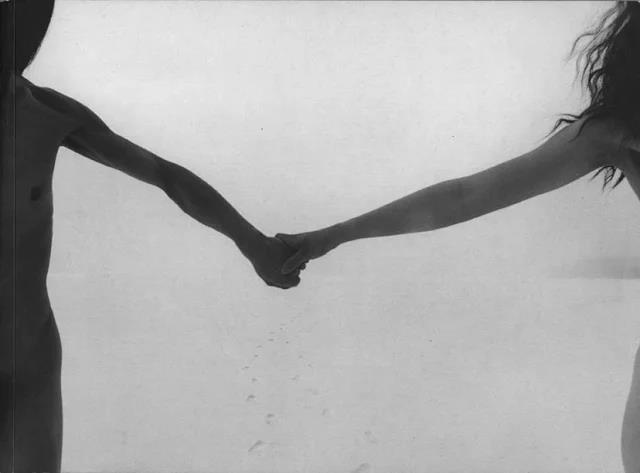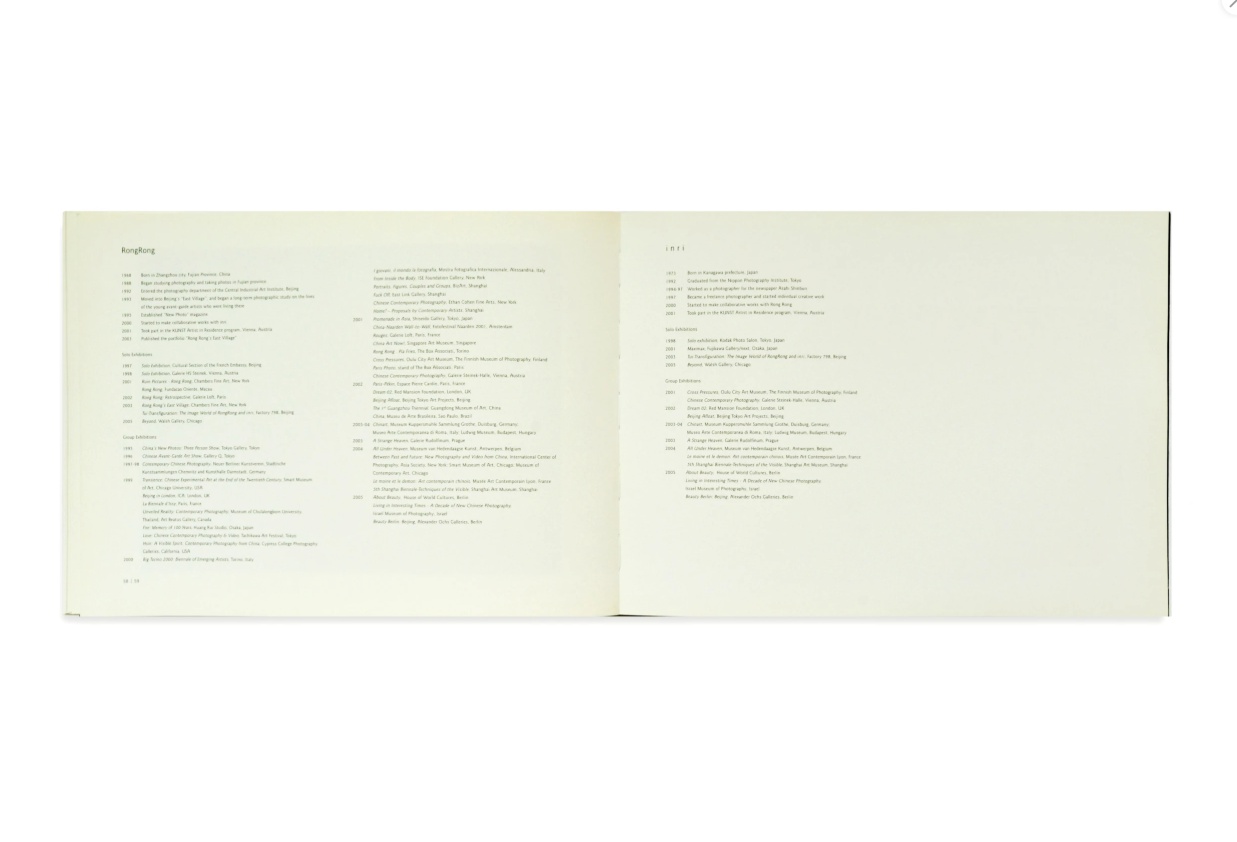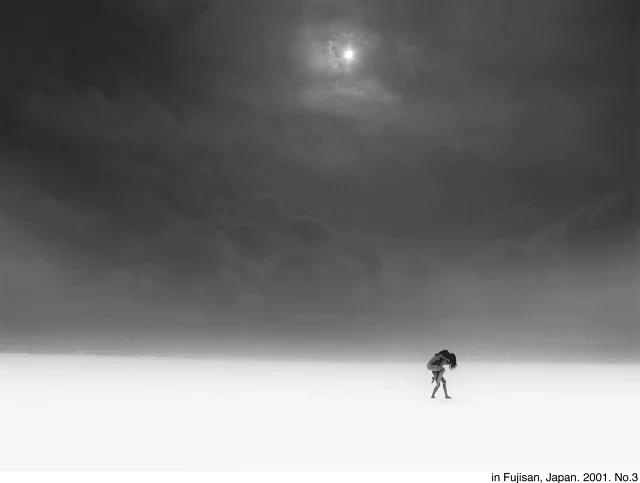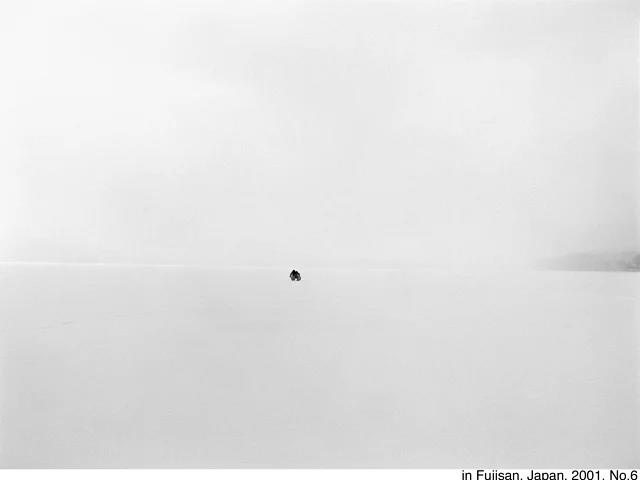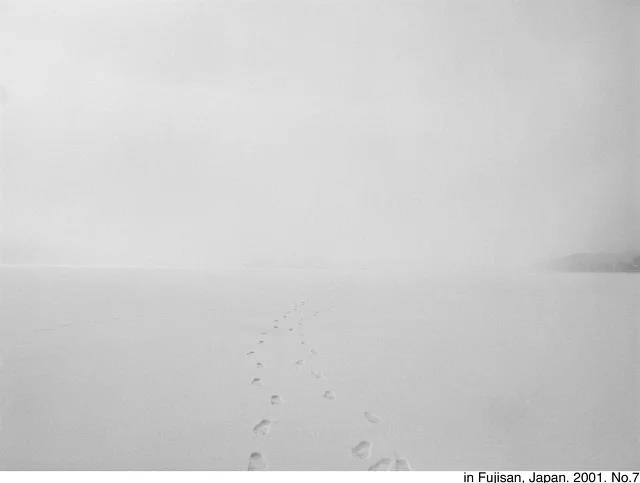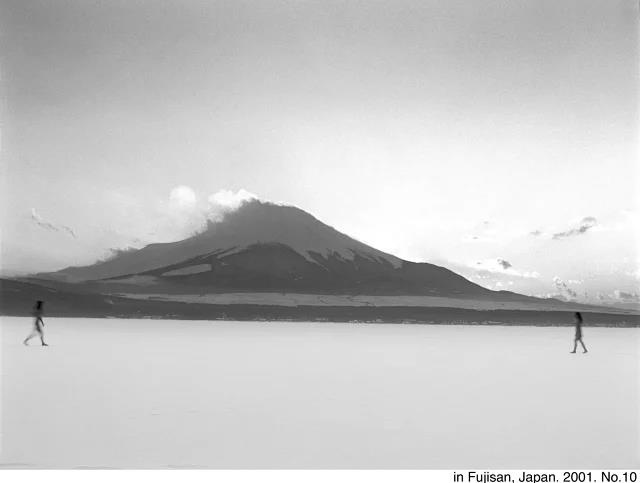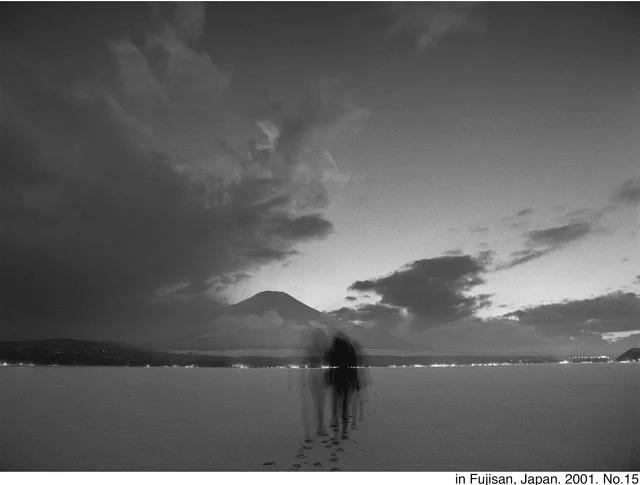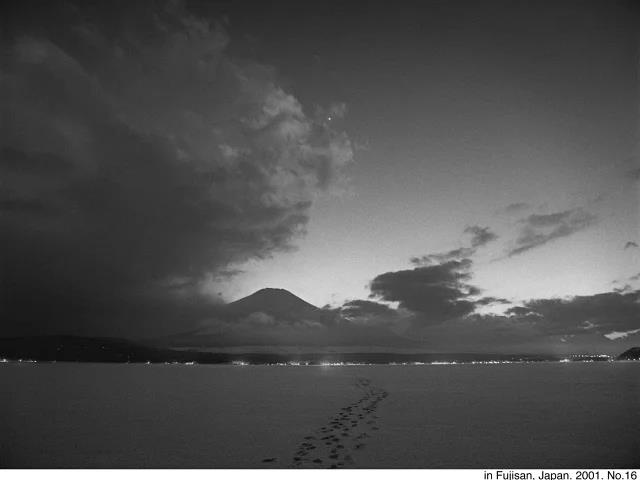Preface
The first time I saw RongRong and inri's Mt. Fuji photographic series in their studio. I was filed with joy; the joy of discovering not just any art, but an art that was about the timelessness of love. They had succeeded in creating a series of images that were not in any way like a "Hallmark" version of love, but were in fact the real thing. This was clearly the type of love that makes people do foolish things just because they are no longer alone. There was a purity and innocence to their performances that I found quite touching. Yet, perhaps what made their imagery most poignant is not only the recklessness with which they approached diving into their vision, but the underlying fragility of the very thing they hoped to express. One can't help thinking about the sheer beauty of two people ready to shed their clothes and move freely on a frozen lake. But then there is also the reality of the act: It was a dangerous thing to do and must have involved extreme discomfort. This creates an interesting visual paradox. Reality is what could have grounded their transcendence. So the pure expression of their love is not without an edge. inri and RongRong are definitely cognizant of the ephemeral nature of love.However, I still find it remarkable that at the time of the Mt. Fuji series (just 3 months after they were married), RongRong and inri couldn't speak the same language. Their camera became their voice.
When I look back at RongRong and inri's work before they met, each artist's work was always combating hopelessness. By falling in love, they were able to transcend not only their environment, but also something more eternal: their spirits.
Julie Walsh
Director, Walsh Gallery
